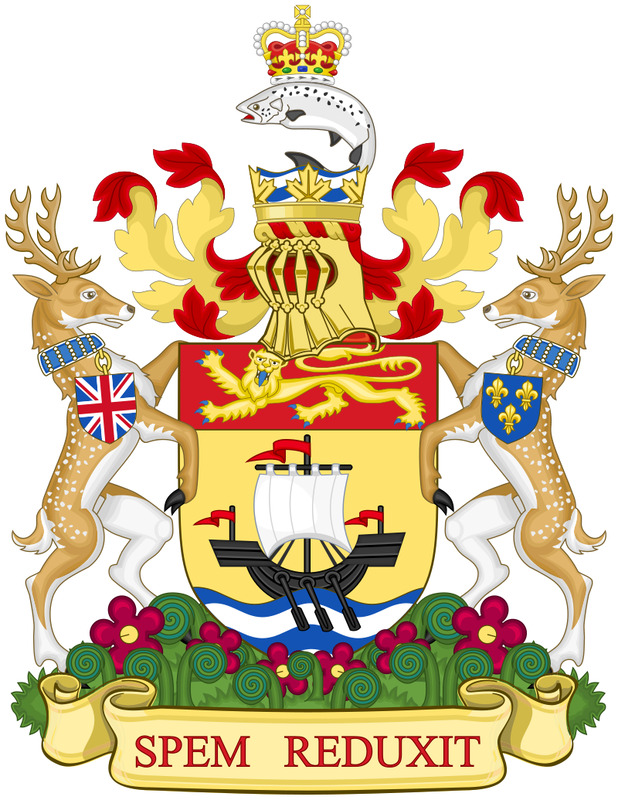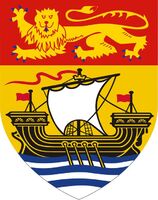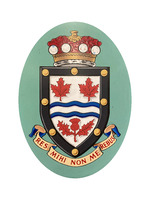UNB Coat of Arms Inspiration
The New Brunswick Coat of Arms (left) was granted by Queen Victoria in 1868 and is based on the Great Seal of the province (right).
The upper third of the shield is red, with a gold lion, symbolizing New Brunswick’s ties to Britain and connection to the royal House of Hanover’s Duchy of Brunswick in Germany, after which the original colony was named.
The ancient galley in black, celebrates and symbolizes the maritme location and early ship building prominence of the province.
The crest and moto were assigned by Order of the Lieutenant Governor in Council in 1966. Other features were assigned by Royal Warrant of Queen Elizabeth II on Sept. 24, 1984, during a visit to Fredericton to honour the 200th anniversary of New Brunswick's creation.
On the coat of arms, the shield is supported by two white-tailed deer wearing collars of wampum. From one collar is suspended the Royal Union Flag, from the other the arms of Royalist France, to indicate the province's British and French background. The crest above the shield features an Atlantic salmon leaping from a coronet of gold maple leaves and bearing St. Edward’s Crown on its back. The coat of arms’ base is a grassy mound with fiddleheads and violets, the provincial floral emblem.
The moto, 'Hope was restored', -- added in 1966 -- refers to the province's having acted as a haven for Loyalist refugees who fled there during and after the American Revolution.
In 1911 William Maxwell Aitken was knighted Sir Max by King George V. In 1917 he was given peerage as 1st Baron Lord Beaverbrook, a title reminiscent of the Miramichi region (specifically, Beaverbrook Stream) where he grew up.
The Barony Crest (left), consists of two red maple leaves and a red thistle separated by two wavy blue barrulets. The black border is inlaid with gold coins. It is topped with the Coronet of a British Baron/Life Peer.
The Beaverbrook Coat of Arms (right) is made up of several elements. At the top is the Beaverbrook Crest depicting a young red rooster upon a drum which can be found in Fairbairn's Book of Crests, 1905 ed. The supporters on either side are a set of regardant beavers holding proper fish in their mouths.
Beaverbrook's friend Rudyard Kipling infamously wrote of the creatures on Beaverbrook's own coat of arms; "your beavers don't beave enough" (see letter, April 12, 1917). UNB adopted a new coat of arms and incorporated beavers in Beaverbrook's honour.
Symbolically, the beaver denotes industry, perseverance and determination. It was officially adopted as Canada’s national symbol in an Act by the Canadian parliament in 1975 and is often found in arms granted to families connected in some way to Canada. Fish can have a variety of symbolism. Generosity of mind, spiritual nourishment, and force of industry.
The moto banner at the bottom reads; Res Mihi Non Me Rebus. This Latin phrase means “I suit life to myself, not myself to life”. It was created by the College of Arms, London and recorded at the College of Arms, London, England, 10 February 1917.



